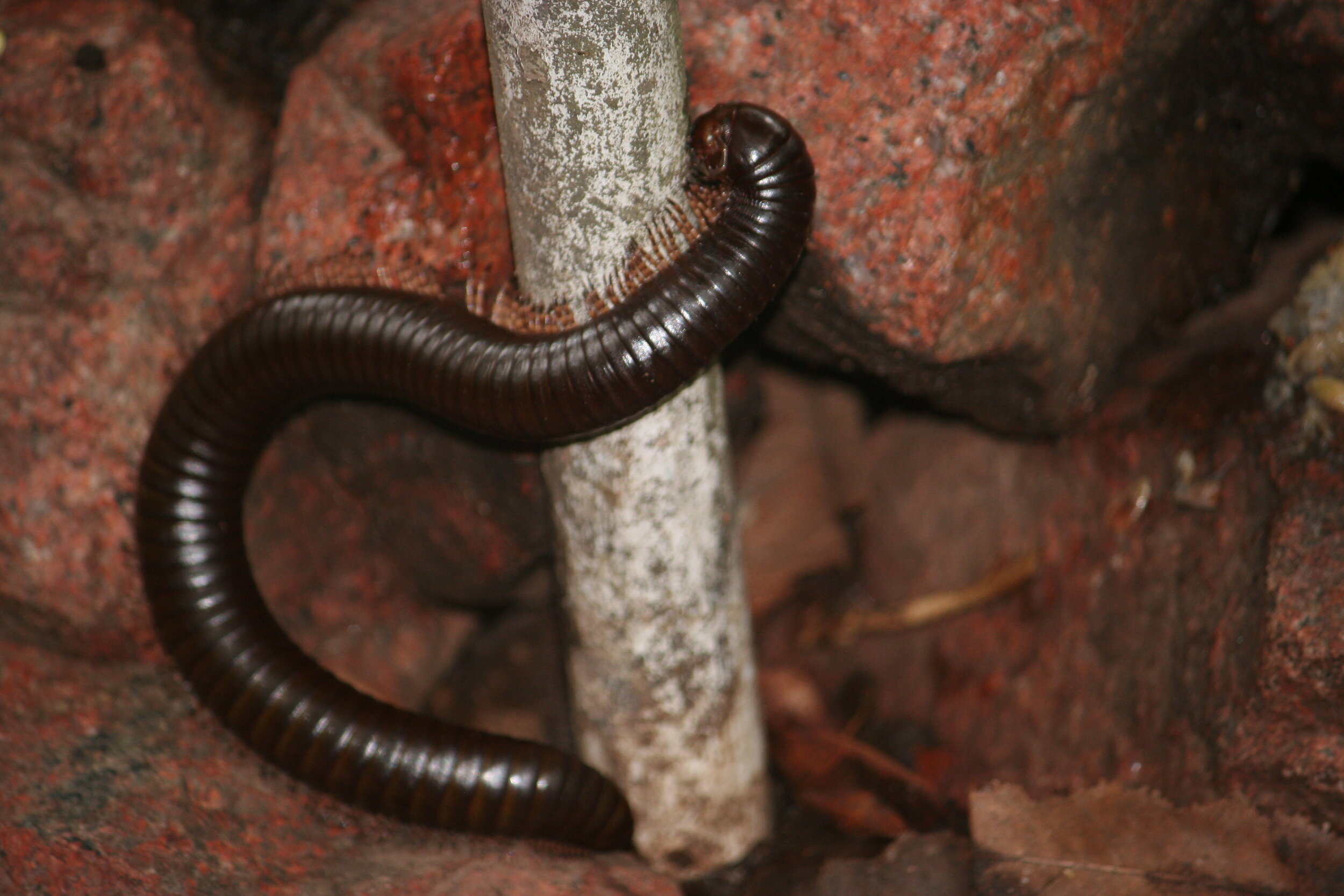Millipède géant des Seychelles (Sechelleptus seychellarum)
Le mille-pattes géant des Seychelles, autrefois répandu dans les îles granitiques, trouve aujourd'hui refuge sur des îles sans prédateurs comme Cousine. Avec deux paires de pattes par segment corporel, il se déplace lentement et ne constitue pas une menace, contrairement à son cousin prédateur plus rapide, le mille-pattes. Au lieu de cela, il s'appuie sur une défense chimique pour dissuader les prédateurs.
L'espèce a été inscrite sur la liste rouge de l'UICN dans la catégorie "en danger". L'espèce habite 14 îles des Seychelles, avec une zone d'occurrence de 600 km2 et une zone d'occupation de 37 km2.
Malgré leur petite taille, ces mille-pattes jouent un rôle crucial sur l'île de Cousine. Ils constituent une source de nourriture vitale pour divers animaux locaux et contribuent de manière significative à la santé de l'écosystème en décomposant la litière végétale grâce à leurs habitudes alimentaires. Ce processus de décomposition est essentiel pour le cycle des nutriments et la fertilité du sol, ce qui profite à toutes les espèces végétales et animales de l'île.
Les invertébrés comme le mille-pattes géant des Seychelles passent souvent inaperçus, alors qu'ils jouent un rôle essentiel dans le maintien de l'équilibre écologique. Leur présence met en évidence le réseau complexe de la vie, où chaque organisme, aussi petit soit-il, joue un rôle essentiel dans les efforts de conservation. L'observation de ces créatures nous rappelle leur immense importance dans le maintien de la biodiversité et des services écosystémiques. La prochaine fois que vous rencontrerez un mille-pattes géant des Seychelles, appréciez son impact humble mais profond sur l'écosystème délicat de l'île Cousine.


